How Far Apart Should Fence Posts Be? Key Guidelines for Durability
- February 15, 2024
- 0 comment
The integrity of a fence is fundamentally anchored in how well its posts are spaced and installed. Properly spaced fence posts provide the necessary support to withstand environmental challenges such as wind, rain, and the shifting of the earth. However, determining the ideal distance between each post can be a complex task, influenced by several variables including the type of material, the purpose of the fence, and even local building codes. This article will navigate through these considerations, presenting a comprehensive guide to optimizing fence post spacing for durability and longevity.
Understanding How Far Apart Should Fence Posts Be

Determining the appropriate distance between fence posts is a foundational step in constructing a durable and stable fence. This decision is influenced by various factors such as material choice, fence height, environmental conditions, and the intended purpose of the fence. Balancing these elements effectively ensures not only the structural integrity of the fence but also its aesthetic appeal and functionality over time. Proper post spacing is vital for preventing sagging, leaning, or other forms of wear that can compromise the fence’s effectiveness and longevity.
Different Methods of Fence Spacing
- Proportional Spacing: This method involves dividing the total length of the fence line by a specific segment length, which results in evenly spaced sections across the entire fence. Each section is the same size, providing a uniform and aesthetically pleasing appearance. This approach may require cutting panels or posts to fit exact measurements, ensuring that each segment is proportionally identical.
- Remainder Spacing: With this method, fence posts are spaced at standard intervals (e.g., every 8 feet) until reaching the end of the fence line. The final segment might not fit this standard spacing and could end up being shorter, leaving a “remainder” section. This method is straightforward and often used for convenience, but it can result in one segment being noticeably different in size.
- Feathered Spacing: Similar to the remainder method, feathered spacing also involves spacing posts at standard intervals. However, instead of leaving the uneven section at the end, the difference is distributed over the last few segments. This creates a more gradual transition and can help avoid a stark contrast in panel sizes. It’s a compromise between the uniformity of proportional spacing and the simplicity of remainder spacing, aiming to minimize the visual impact of the final adjustments.
Factors Influencing Post Spacing
The process of determining the optimal spacing for fence posts is nuanced, influenced by multiple factors that must be carefully considered to achieve a balance between aesthetic appeal and structural integrity.
- Type of Fence Material: The choice of material is paramount as different materials bear distinct characteristics affecting their spacing requirements. Wood, metal, vinyl, and composite materials each have unique properties related to weight, flexibility, and durability, which in turn influence how far apart fence posts should be placed. For example, heavier materials like certain metals may require closer post spacing to bear the additional weight, while lighter materials like vinyl might allow for wider spacing.
- Purpose of the Fence: The intended use of the fence plays a critical role in determining post spacing. A fence designed for privacy might necessitate closer posts to support dense panels that block sightlines, whereas decorative fences can afford wider spacing. Similarly, fences meant to contain livestock or provide security will have specifications tailored to ensure they fulfill their roles effectively without compromise.
- Geographical Considerations: The local environment where the fence will be erected impacts post spacing decisions. Factors such as wind patterns, soil type, and climate conditions can all influence the stability and durability of the fence. Areas prone to high winds might require closer spacing and deeper post installations to prevent toppling or leaning, while regions with soft or sandy soil may necessitate additional support mechanisms or specific post types to ensure a firm foundation.
- Legal and Building Codes: Before embarking on any fencing project, it’s essential to be aware of local building codes and regulations. These can have a significant impact on your fence design, including post spacing. Municipalities may have specific requirements for fence height, materials, and how far they must be from property lines, all of which can affect post placement. Ensuring compliance with these regulations not only helps in avoiding legal issues but also ensures that your fence is built to standard, contributing to its durability and safety.
Incorporating these factors into the planning process is crucial for laying the groundwork of a durable, stable fence. By understanding and adapting to these considerations, homeowners and contractors can ensure that the fence not only meets its intended purpose but also withstands the test of time.
General Guidelines for Fence Post-Spacing
After considering the factors that influence post spacing, it’s time to look at some general guidelines that apply to most fencing projects. These guidelines serve as a starting point, providing a foundation that can be adjusted based on the specific needs of your project.
Standard Spacing Ranges
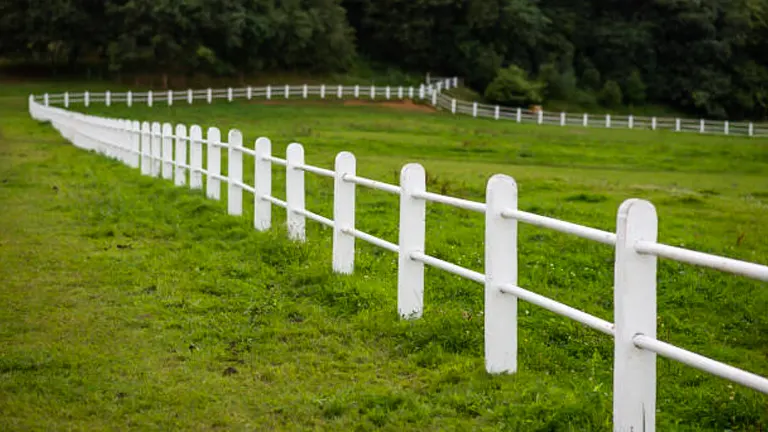
As a rule of thumb, fence posts are typically spaced between 6 to 8 feet apart. This range provides a balance between structural stability and material efficiency. The exact distance can vary depending on the factors discussed earlier, such as fence material and purpose. For instance, posts for a wooden privacy fence are commonly spaced 8 feet apart to support the weight of the panels and ensure privacy, while decorative metal fences might allow for wider spacing.
Material Properties and Post Spacing Recommendations
| Material | Recommended Spacing (Feet) | Tensile Strength (psi) | Elastic Modulus (E, in psi) | Density (lbs/ft³) | Typical Lifespan (Years) |
|---|---|---|---|---|---|
| Cedar | 7 – 8 | 7,500 | 1.12 x 10⁶ | 23 | 15-30 |
| Pine | 6 – 7 | 5,000 | 1.4 x 10⁶ | 25 | 10-20 |
| Metal (Iron) | 8 – 10 | 40,000 | 29 x 10⁶ | 480 | 20-100+ |
| Vinyl | 6 – 8 | 6,500 | 0.39 x 10⁶ | 59 | 20-30 |
| Aluminum | 8 – 10 | 25,000 | 10 x 10⁶ | 168 | 20-50 |
It shows how different materials require specific post spacing to ensure the fence’s stability and durability. This guidance is crucial for making informed decisions about material selection, considering both the physical properties of the materials and their performance in various environments. It emphasizes the importance of choosing the right material and spacing for a fence that is both aesthetically pleasing and capable of withstanding the test of time. The table effectively illustrates the key considerations in designing and constructing a durable fence, highlighting the need for careful planning and material selection.
Impact of Fence Height and Panel Width
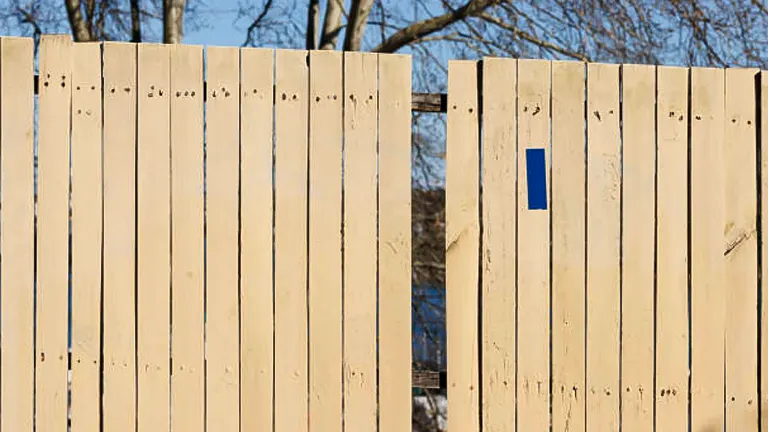
The height of the fence and the width of the panels also play a crucial role in determining post spacing. Taller fences require more support to withstand wind and gravitational forces, often necessitating closer post spacing. Similarly, the standard width of prefabricated fence panels, which is typically around 6 to 8 feet, can dictate post spacing for ease of installation and aesthetic uniformity.
Post Spacing for Different Fence Heights
| Fence Height | Panel Width (Feet) | Wind Speed (mph) | Wind Pressure (psf) | Recommended Post Spacing (Feet) |
|---|---|---|---|---|
| 4 ft | 6 | 30 | 2.3 | 8 |
| 4 ft | 8 | 30 | 2.3 | 7 |
| 6 ft | 6 | 30 | 3.5 | 7 |
| 6 ft | 8 | 30 | 3.5 | 6 |
| 8 ft | 6 | 30 | 4.7 | 6 |
| 8 ft | 8 | 30 | 4.7 | 5 |
This strategic approach to spacing is critical for maintaining structural integrity against wind forces, a factor that becomes increasingly important with taller fences and larger panels. By offering a clear framework for adjusting post spacing in response to these variables, the table empowers builders and designers to create fences that are not only visually appealing but also resilient and durable. The insights gained from this table emphasize the importance of detailed planning in the construction process, ensuring that fences are built to withstand the elements and stand the test of time.
Measurement and Alignment
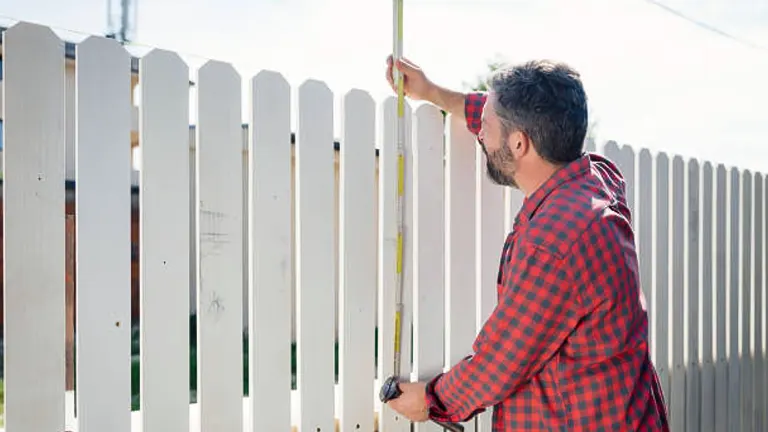
Precise measurement and alignment are key to the longevity of the fence. It’s important to measure the entire length of the fence line before starting and plan the post placements accordingly to avoid any mid-project adjustments. Using tools like string lines or laser levels can help ensure that posts are aligned both vertically and horizontally, providing a solid, straight fence line. Below, we delve into enhanced techniques and technologies that elevate the standard practices of measurement and alignment:
Geodetic Principles and Local Topography
- Topographic Survey: Before laying out fence posts, conducting a topographic survey of the land can provide critical data on elevation changes, slopes, and potential obstacles. This data helps in planning post placement more accurately, especially over uneven terrain, ensuring that the fence follows the natural contours of the land effectively.
- Geodetic Considerations: For longer fences, considering the curvature of the Earth might be necessary to ensure absolute alignment. While this is generally a concern for large-scale projects, applying geodetic principles can enhance the precision in post placement, avoiding cumulative errors over distance.
Incorporating Technology for Precision
Modern technology offers tools that go beyond traditional string lines and manual levels, providing both accuracy and efficiency in fence construction.
- Laser Levels: For horizontal alignment, laser levels project a perfectly straight line over long distances, unaffected by the undulations of the terrain. This ensures that fence posts are aligned with a high degree of precision.
- GPS and GIS Technology: GPS (Global Positioning System) devices, especially those with RTK (Real-Time Kinematic) capability, can pinpoint exact post locations with centimeter-level accuracy. GIS (Geographic Information Systems) software can then be used to map out the fence line on a digital model of the terrain, taking into account geographical features.
- Drones for Aerial Surveys: Drones equipped with cameras can provide a bird’s-eye view of the fence line, assisting in the identification of any alignment issues and helpin
Comparison of Measurement and Alignment Tools
| Tool | Use Case | Accuracy | Benefits |
|---|---|---|---|
| String Line | Basic alignment | Moderate | Low cost, simple to use |
| Manual Level | Vertical post alignment | Moderate | Cost-effective, no power required |
| Laser Level | Horizontal & vertical alignment | High | Precise over long distances, easy to use |
| GPS (RTK) | Post placement planning | Very High | Centimeter-level accuracy, efficient for large areas |
| GIS Software | Layout planning & topography | High (depends on data quality) | Allows for precise planning on digital terrain models |
| Drones | Aerial survey & alignment checks | High (visual) | Provides comprehensive overview, can detect obstacles |
The transition from basic tools to sophisticated technology reflects a broader trend towards precision in construction, where the accuracy of measurements directly correlates with the project’s success. This comparison not only showcases the evolution of tools in response to increasing demands for accuracy and efficiency but also emphasizes the value of integrating technological advancements into traditional construction practices. By carefully selecting tools that align with the project’s needs, builders can enhance the quality, durability, and alignment of their constructions, paving the way for projects that are both aesthetically pleasing and structurally sound.
Installation Tips for Durable Fence Posts

The longevity of a fence is not only determined by how well the posts are spaced but also by how well they are installed. Here are some tips to ensure that your fence posts are as durable as the fence they support:
Soil Type Assessment and Adaptation
- Soil Type Analysis: Conduct a detailed analysis of the soil type where the fence will be installed. Sandy or loamy soils might require different treatments, such as larger footings or specific types of gravel for drainage, compared to clay-rich soils which might hold moisture and necessitate enhanced drainage solutions.
- Post Anchoring Systems: For extra stability, especially in loose or very sandy soils, consider using post anchors that provide additional grip in the soil. This can be particularly beneficial in areas prone to high winds or on sloping land.
Enhanced Material Considerations
- Wood Treatment and Protection: When using wooden posts, opt for pressure-treated wood that’s rated for ground contact. Additionally, applying a wood preservative to the part of the post that will be underground can extend the lifespan by preventing rot.
- Protective Sleeves for Metal Posts: To prevent corrosion, metal posts can be set in protective sleeves before being embedded in concrete. This barrier prevents direct contact with moisture and soil, two primary factors that can lead to rust and deterioration.
Precision Installation Techniques
- Laser-Guided Alignment: For ensuring straight and level posts, consider using laser-guided tools that offer a higher degree of precision than traditional levels. This is especially useful for long stretches of fencing where minor deviations can become magnified.
- Pre-Set Concrete Footings: In some cases, using pre-set concrete footings can provide a more uniform base for your posts. These can be installed and leveled in advance, ensuring that each post sits perfectly before the rest of the fence is constructed.
- Adjustable Post Holders: Adjustable post holders that sit above ground level can be used, especially in areas with high moisture. These holders elevate the wood from direct contact with the ground, reducing rot risk and allowing for easier adjustments or replacements.
Regular Adjustments and Checks
- Post-Installation Adjustments: Once the concrete has set, but before full hardening (usually within 24 hours), recheck the alignment of each post and make any necessary adjustments. This window provides some flexibility to correct minor deviations.
- Seasonal Check-Ups: Seasonal changes can affect soil density and moisture levels, potentially impacting the stability of your fence posts. Conducting seasonal inspections can help identify any shifts early on, allowing for proactive adjustments.
Implementing these guidelines and tips can significantly impact the durability and appearance of your fence. By carefully planning post spacing and paying close attention to installation details, you can build a fence that not only meets your functional and aesthetic needs but also stands strong for years to come.
Maintenance and Inspection

A well-constructed fence can last for years, but its longevity is heavily dependent on regular maintenance and inspection. Here are some tips to ensure your fence remains in top condition:
- Routine Checks: At least twice a year, walk along the fence line and inspect each post for signs of wear or damage. Look for rot (in wood fences), rust (in metal fences), cracks (in vinyl or composite fences), or any signs of loosening in the ground. Early detection of these issues can prevent more significant problems down the line.
- Stabilizing Loose Posts: If a post becomes loose, assess the cause. For wooden posts, it may be rot at the base; for metal, it could be rust weakening the structure. Addressing the specific issue—whether it means replacing the post or stabilizing it with additional concrete or gravel—can prevent further damage.
- Cleaning and Treating: Regular cleaning of your fence can prevent the buildup of dirt, mold, and mildew, which can deteriorate materials over time. For wood fences, consider re-staining or applying a waterproof sealant every few years to protect against moisture and sun damage. Metal fences may require rust removal and repainting, while vinyl fences benefit from a simple wash down with soap and water.
- Seasonal Adjustments: Adapt your inspection routine to the seasons. Winter weather can be particularly harsh on fences, necessitating a thorough inspection in early spring to address any damage caused by ice, snow, or wind. Similarly, the end of summer is an ideal time to check for any impacts from heat and storms.
- Pest Inspection: Regularly check for signs of pest infestation, particularly termites and carpenter ants for wooden fences, which can severely compromise the structural integrity of the wood. Early detection and treatment are crucial to prevent extensive damage.
- Moisture and Drainage Check: Ensure the area around your fence has proper drainage to prevent water from pooling at the base of the posts. Persistent moisture can lead to rot in wooden fences and corrosion in metal ones. Adjust landscaping or implement drainage solutions if necessary.
- Protective Coatings for Wood Fences: Beyond staining or sealing, consider applying insect repellent treatments to wood fences to guard against pest damage. UV-protective coatings can also help minimize weathering from sun exposure.
- Anti-Rust Treatments for Metal Fences: For metal fences, applying anti-rust coatings every few years can significantly reduce the risk of corrosion. Inspect weld points and joints, which are often the first areas to show rust, and apply touch-up paint as needed.
- Vinyl and Composite Care: For vinyl and composite fences, use specialized cleaners designed to tackle tough stains without damaging the material. Avoid using abrasive tools that can scratch or dull the surface.
- Hardware and Accessory Maintenance: Check and tighten any loose bolts and screws. Lubricate hinges and locks on gates to ensure smooth operation. Replace any worn or damaged hardware to prevent gate sagging and misalignment.
Conclusion
Determining the optimal spacing for fence posts is more than a matter of aesthetics; it is a crucial factor in ensuring the durability and stability of your fence. By considering the type of material, the purpose of the fence, geographical considerations, and legal requirements, you can establish a strong foundation for your fencing project. Following the general guidelines provided—spacing posts 6 to 8 feet apart, accounting for fence height and panel width, and ensuring precise measurement and alignment—will set you on the path to constructing a fence that not only meets your immediate needs but stands the test of time.
FAQs
- What’s the optimal distance between fence posts for maximum durability?
The optimal spacing typically ranges between 6 to 8 feet apart. This range balances structural stability and material efficiency, but the specific distance can vary based on the fence material, height, and local environmental conditions. - Does the type of fence material affect how far apart the posts should be?
Yes, different materials have different strength and flexibility properties. For example, metal and vinyl fences might support wider spacing due to their material strength, whereas wooden fences often require closer spacing to support the weight of the panels and maintain stability. - How do environmental factors influence fence post spacing?
Environmental factors such as wind, soil type, and moisture levels can significantly influence post spacing. Areas with high winds might necessitate closer spacing for added stability, while fences in soft or sandy soil may require deeper post installations or additional support mechanisms. - Should fence height affect how far apart my posts are placed?
Absolutely. Taller fences face more wind resistance and leverage against the posts, often requiring closer post spacing to ensure structural integrity and prevent leaning or collapse. - How does the purpose of the fence impact post spacing decisions?
The intended use of the fence (privacy, security, decorative, containment) can dictate spacing requirements. For instance, privacy fences might need closer post spacing to support heavier panels without sagging, whereas decorative fences can afford wider spacing. - Can local building codes influence post spacing?
Yes, local building codes and regulations can have specific requirements for fence construction, including post spacing, height, and material use. It’s important to consult these regulations before beginning your project to ensure compliance. - What is the recommended depth for burying fence posts?
A general rule is to bury at least one-third of the fence post’s length into the ground, with a minimum depth of two feet for standard fences. However, this can vary based on the fence height and soil conditions, with deeper installations recommended for higher fences or in areas with loose soil or high wind. - How can I ensure my fence posts remain straight and level over time?
Using proper installation techniques, including the use of post leveling tools and concrete or gravel for stabilization, is key. Regular inspections and maintenance can also help identify and correct any leaning posts early on, preventing further misalignment.
In wrapping up, the key to a long-lasting fence lies in the strategic spacing of its posts. Tailoring this spacing to the specific demands of your project guarantees a structure that’s both sturdy and enduring. Keep these guidelines in mind for a fence that excels in both form and function, safeguarding and beautifying your space for years to come.

Benjamin Brooks
Forestry AuthorGreetings! I'm Benjamin Brooks, and my journey over the past 15 years has revolved around the fascinating realms of content creation, expertise in snow clearing, and the intricate world of lumberjacking and landscaping. What began as a simple curiosity about the natural world and heavy machinery has evolved into a passionate profession where my love for crafting words intertwines seamlessly with my lumberjacking and garden skills.


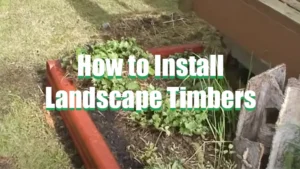

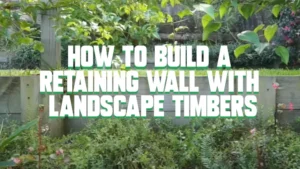


Leave your comment